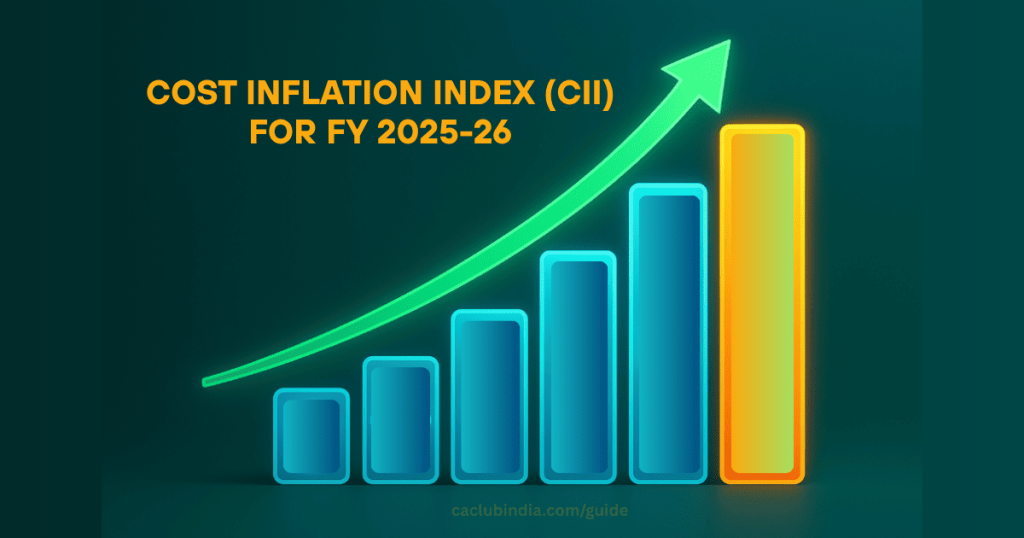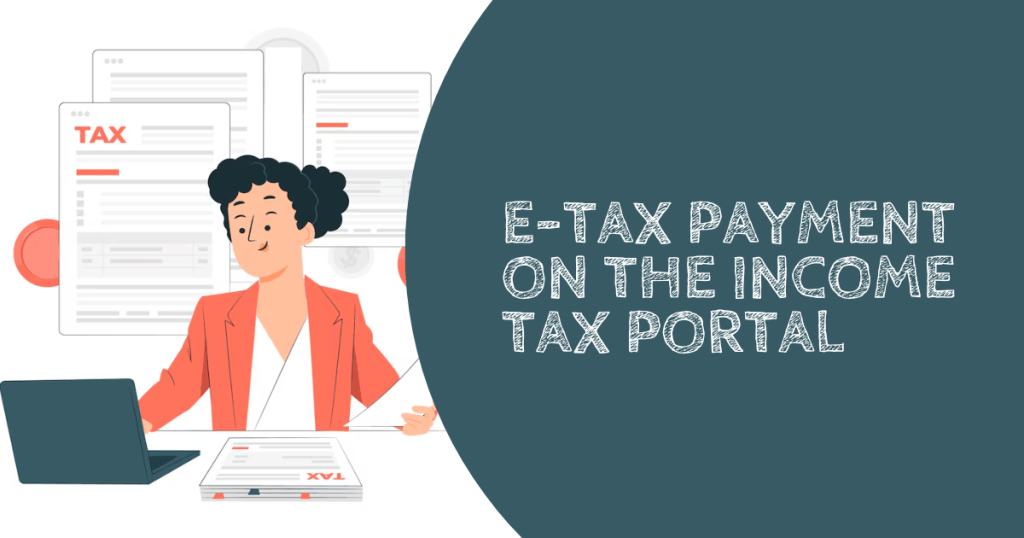Cost Inflation Index (CII) is used to estimate the yearly increase in an asset’s price due to inflation.
Indexation is a process by which the cost of acquisition is adjusted against inflationary rise in the value of asset.
Recent Update
| On 1st July 2025, Central Board of Direct Taxes (CBDT), via Notification No. 70/2025, has officially notified the Cost Inflation Index (CII) for the Financial Year 2025-26 as “376”. |
Relevance of CII
CII is useful in determining the long-term capital gains on the sale of property by accounting for inflation. By applying the CII, taxpayers can reduce their taxable capital gains, reflecting a more accurate, inflation-adjusted profit.
Types of Assets Eligible for CII Adjustment
The Cost Inflation Index (CII) is applicable to certain types of assets, like:
- Land and Building
- Property
- Unlisted Shares
- Debt Mutual Funds
The Cost Inflation Indexation benefit is not applicable to:
- Listed Equity Shares
- Equity Mutual Funds
Cost Inflation Index Table Upto FY 2024-25
| Financial Year | Cost Inflation Indexation (CII) |
| 2001-02 | 100 |
| 2002-03 | 105 |
| 2003-04 | 109 |
| 2004-05 | 113 |
| 2005-06 | 117 |
| 2006-07 | 122 |
| 2007-08 | 129 |
| 2008-09 | 137 |
| 2009-10 | 148 |
| 2010-11 | 167 |
| 2011-12 | 184 |
| 2012-13 | 200 |
| 2013-14 | 220 |
| 2014-15 | 240 |
| 2015-16 | 254 |
| 2016-17 | 264 |
| 2017-18 | 272 |
| 2018-19 | 280 |
| 2019-20 | 289 |
| 2020-21 | 301 |
| 2021-22 | 317 |
| 2022-23 | 331 |
| 2023-24 | 348 |
| 2024-25 | 363 |
| 2025-26 | 376 |
How Indexation Applied for Long-Term Capital Assets?
Indexation for long-term capital assets helps in adjusting the purchase price of the asset using the Cost Inflation Index (CII) to account for inflation, thereby reducing the taxable capital gain. This method is not applicable for short-term capital gains. The formulas are:
| Indexed Cost of Asset Acquisition = (CII for the year of asset transfer x Cost of asset acquisition) / CII for the year of asset Purchase or year 2001-02, whichever comes later Indexed Cost of Asset Improvement = (CII for the year of asset transfer x Cost of asset improvement) / CII for the year of asset improvement. |
How to Calculate Capital Gain using CII?
Amit purchase a house in FY 2001-02 for Rs 10 Lakh. He sells the same in FY 2017-18 for Rs 40Lakh. What will be the indexed cost of acquisition?
Solution :
| Here, CII for year 2001-02 is 100 CII for year 2017-18 is 272 The indexed cost of acquisition = 10,00,000 * 272/100 = 27,20,000 Capital Gain is 12,80,000 (40,00,000 – 27,20,000) |
Also Read Capital Gains Tax Indexation: When it is Required?
What is the Base Year Concept?
The “Base Year Concept” in the context of CII is used for calculating inflation-adjusted values of assets for taxation purposes.
For calculation purposes, the index value is set to 100 for the base year (2001-2002).
If an asset acquired before (2001-2002), its acquisition cost for tax purposes is determined as the higher of two values:
- The actual cost of acquisition.
- The Fair Market Value (FMV) of the asset as of 1st April 2001.
New Tax Regime For FY 24-25 Click Here
FAQs
The full form of CII is Cost Inflation Index which is used to adjust the purchase price of assets for inflation over time.
The base year for Cost Inflation Index (CII) was changed from 1981-82 to 2001-02 because taxpayers faced challenges in valuing properties acquired before April 1, 1981.
The index value for the base year is always set at 100.


